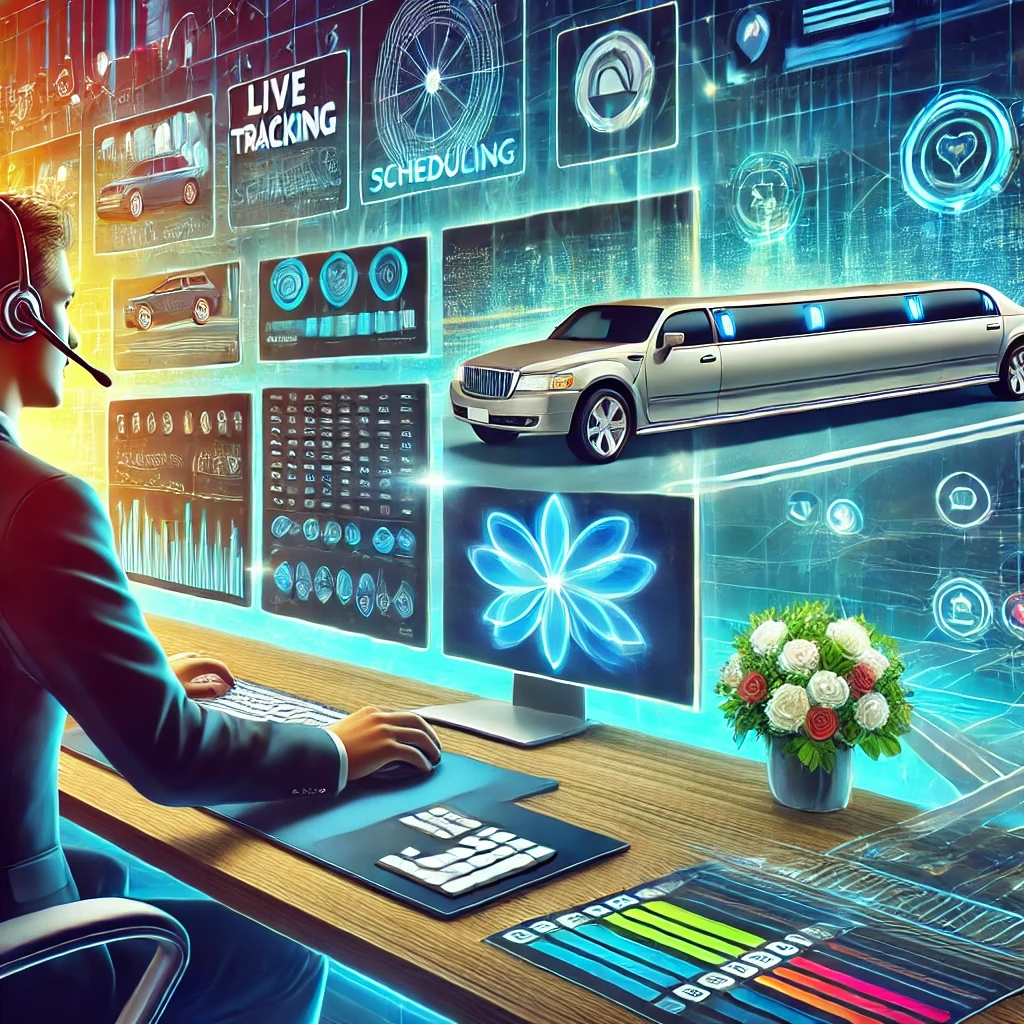Introduction:
Limousine services traditionally rely on fuel-intensive vehicles, but today’s focus on sustainability demands a change. Adopting eco-friendly practices isn’t just about maintaining a positive public image—it’s a move toward reducing the environmental impact and enhancing operational efficiency. This article explores the essential elements of sustainable dispatch practices and how limousine companies can reduce their carbon footprint while maintaining high-quality service.
1. Eco-Friendly Vehicle Options: A Key Shift
Issue:
Limousines are often associated with fuel-hungry engines, contributing significantly to emissions. Traditional limousine fleets rely on gasoline or diesel, directly increasing the carbon footprint of the transportation industry.
Solution:
Switching to hybrid or electric vehicles (EVs) can dramatically lower emissions. EVs produce zero tailpipe emissions, which directly reduces air pollution in urban areas. Hybrid vehicles, on the other hand, are a practical alternative for companies not ready for a fully electric fleet. Adopting these eco-friendly options aligns with sustainable goals while meeting client demands for greener choices. Many clients appreciate companies with environmentally conscious practices, and such options can attract a wider customer base.
2. Efficient Route Optimization with GPS and AI
Issue:
Without efficient route planning, limousines waste fuel and time, significantly increasing carbon emissions. Traditional dispatch systems often result in unnecessary detours and increased idling times, both of which are carbon-intensive.
Solution:
Implementing advanced GPS tracking and AI-powered dispatch systems allows for more precise routing, helping reduce travel times and fuel consumption. AI can analyze traffic patterns and recommend optimal routes, minimizing idle times and reducing the carbon footprint of each ride. Efficient route optimization also leads to better time management and customer satisfaction, as clients can enjoy more reliable arrival times.
3. Eco-Conscious Maintenance Practices
Issue:
Routine vehicle maintenance is critical, yet improper practices lead to increased emissions. For instance, poorly tuned engines or underinflated tires force the vehicle to use more fuel than necessary.
Solution:
Conducting regular vehicle check-ups and adopting eco-conscious maintenance practices is essential. Keeping tires properly inflated, engines finely tuned, and exhaust systems clean ensures vehicles operate at peak efficiency. Preventative maintenance also extends the lifespan of the fleet, reducing the need for new vehicles and conserving resources. Eco-friendly maintenance also includes using biodegradable cleaning products and sustainable materials for repairs, further reducing the service’s environmental impact.
4. Reducing Idling Time to Save Fuel
Issue:
Many drivers leave limousines idling while waiting for clients, which significantly contributes to emissions. Idling also wastes fuel, which affects both the environment and operational costs.
Solution:
Educating drivers about the environmental and financial impacts of idling is a simple yet effective step toward sustainability. Dispatchers can schedule precise pick-up times, so vehicles arrive exactly when needed, reducing idle time. Additionally, anti-idling technology can be installed in vehicles to automatically shut off the engine after a certain period, reducing fuel consumption without sacrificing client comfort or service quality.
5. Implementing Digital and Paperless Operations
Issue:
Traditional dispatch systems often require printed schedules, route maps, and client forms. This reliance on paper not only contributes to deforestation but also generates waste.
Solution:
Transitioning to a fully digital dispatch system minimizes the need for printed materials. Mobile apps, digital logbooks, and cloud-based scheduling systems help reduce the carbon footprint associated with paper use. These tools also improve dispatch accuracy and allow for real-time updates, enhancing operational efficiency. Going paperless is an easy way to conserve resources and reduce waste in the office.
6. Encouraging Group Travel and Shared Rides
Issue:
Individual rides for each client mean more trips and higher emissions. Multiple short, single-passenger trips can quickly add up, especially during peak hours.
Solution:
Offering shared rides and promoting group travel are excellent ways to reduce the environmental impact of each trip. When feasible, encouraging clients to share rides, especially for corporate events or airport transfers, maximizes vehicle occupancy and minimizes the total number of trips. Shared rides not only reduce emissions but also lower operating costs, creating a win-win situation for both the company and the environment.
7. Adopting Renewable Energy for Charging Stations
Issue:
Even if companies switch to EVs, charging those vehicles can contribute to emissions if they rely on fossil-fuel-generated electricity.
Solution:
Investing in renewable energy-powered charging stations significantly enhances a fleet’s eco-friendliness. Solar and wind-powered stations allow limousine companies to truly operate sustainably. Partnering with green energy providers or installing solar panels on company premises can ensure that EVs remain a low-carbon option throughout their lifecycle. Renewable energy use aligns with a sustainable business image, reinforcing the company’s commitment to reducing its carbon footprint.
8. Driver Training for Eco-Friendly Practices
Issue:
Fuel consumption varies based on driving style. Aggressive driving, frequent braking, and rapid acceleration contribute to higher fuel usage, which impacts emissions.
Solution:
Providing eco-driving training for all drivers teaches them efficient driving techniques. Smooth acceleration, gradual braking, and maintaining steady speeds can reduce fuel consumption. Such training programs emphasize the importance of driving with a lighter foot and planning maneuvers in advance, both of which benefit the environment. This practice also leads to cost savings on fuel, supporting both sustainability and profitability.
9. Utilizing Green Marketing for Sustainability Awareness
Issue:
Without awareness, sustainable practices may go unnoticed, missing an opportunity to influence industry standards and attract eco-conscious clients.
Solution:
Highlighting sustainable dispatch practices in marketing materials showcases the company’s commitment to reducing its carbon footprint. Social media, website content, and advertising can emphasize green initiatives, such as the adoption of EVs or AI-based routing systems. Green marketing appeals to an increasing segment of clients who prioritize eco-friendly options. By sharing these efforts, companies position themselves as leaders in sustainable luxury transportation, enhancing their reputation and setting a standard within the industry.
10. Carbon Offsetting Programs for Remaining Emissions
Issue:
Despite best efforts, some emissions are unavoidable. Even the most efficient limousine companies produce residual carbon emissions.
Solution:
Partnering with carbon offsetting programs helps mitigate this impact. Companies can contribute to projects like reforestation, renewable energy, and conservation efforts, which absorb or reduce carbon emissions elsewhere. Many clients value services that prioritize sustainability, and providing the option to offset the carbon footprint of their ride can increase customer loyalty. Carbon offsetting demonstrates a limousine company’s dedication to environmental responsibility, completing the sustainability loop.
Conclusion:
Reducing the carbon footprint of limousine services is both possible and necessary. From optimizing routes and switching to greener vehicles to training drivers and adopting digital operations, sustainable dispatch practices benefit both the environment and business operations. Each step, no matter how small, contributes to a cleaner future for the luxury transport industry. By embracing these changes, limousine services can ensure that they provide luxurious rides that are both environmentally responsible and operationally efficient.
Join the Journey to a Greener Future with Saztech Solutions
At Saztech Solutions, we specialize in providing tailored dispatch and operational support to help limousine services implement these sustainable practices seamlessly. By partnering with us, you’ll gain access to efficient solutions that can optimize your fleet’s performance and reduce your environmental impact. Join us at Saztech Solutions, and together, let’s make luxury transportation a leader in sustainability. Reach out today to see how we can support your journey towards a greener future!
Home | About Us | Pricing | Get Started | FAQ | Dispatch Daily | Contact Us
WhatsApp | Facebook | LinkedIn





Leave a Reply